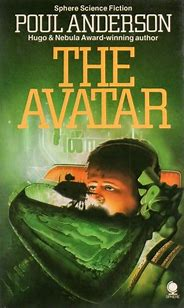The Avatar, XXVII.
Joelle, the holothete with a computer-enhanced perception and understanding of the universe, thinks:
"...I learned long ago not to fear death. Having looked straight into Reality - there is no "I" to dread the loss of. There is a temporary association of mitochondria, eukaryotic cells, intestinal flora, and the like, the whole symbiosis shading off into the world around it that begot it, serving no end except the perpetuation of the genes within. Were the immortality of my 'person' offered me, I would not want it. Too petty, amidst atoms, eons, and galaxies." (p. 238)
This is the mind-body problem again. Physically, chemically and biologically, there is only a temporary association of cells, flora etc. Psychologically, there is experience, self-consciousness, intellect, intuition, understanding and maybe some wisdom. That is where there is an "I." It too is temporary but it exists just as the mitochondria do. The end served by the biological synthesis is the perpetuation of genes but the ends served by the "I" are the growth of consciousness, knowledge and understanding. Immortality, or at least longevity, of the "person" would further those ends.
How do mitochondria generate "I"? How do wavelengths generate colours? Quantitative changes generate irreducible qualitative changes.

3 comments:
Kaor, Paul!
And I absolutely disagree with Joelle's dreary and depressing view of her existence. And whether she wanted it or not her spirit would be immortal if she was a real person, not a fiction.
Ad astra! Sean
Note that Joelle's perception is show to be, at the very least, severely flawed...
Kaor, Mr. Stirling!
I remember that, and of how shattered and disillusioned that left Joelle.
Ad astra! Sean
Post a Comment